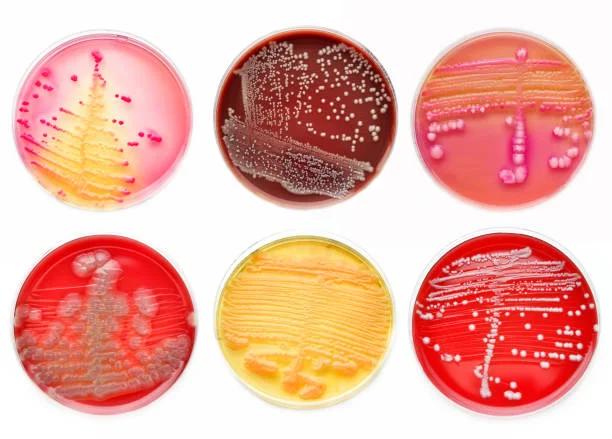HABITAT: Pneumococci are normally present in the nasopharynx of many healthy persons. Carriage rate may be up to 30% in some communities. The organism usually does not cause any illness itself unless a viral infection or some other predisposing factor provokes it to spread to lower respiratory tract, middle ear, sinuses and blood and cause a large number of clinical entities.
MORPHOLOGY: Pneumococci are gram-positive cocci which are usually seen in pairs and hence sometimes called as diplococci. These are oval or spherical in shape whereas when seen in clinical material these look like lancet shaped, in pairs or in short chains. They measure 0.5 to 1.25 μm, are non-motile and non-sporing.
CULTURAL CHARACTERS: These are facultative anaerobes and can grow at temperatures between 25 and 40°C (optimal: 37°C). Growth is better in an environment of 5-10% carbon dioxide and on media enriched with blood, serum or heated blood. These substances provide essential nutrients as well as enzymes such as catalase which can neutralise the toxic hydrogen peroxide liberated by pneumococci.
When incubated aerobically the colonies are surrounded by greenish (alpha) haemolysis. Under anaerobic incubation, the haemolysis is clear (beta). The beta haemolysis is due to the production of heat labile pneumolysin. Because of the production of hydrogen peroxide and autolytic enzymes such as amidase, the organisms tend to die quickly in cultures. This happens more so in cultures, in media without blood or blood products.
BIOCHEMICAL REACTIONS: Pneumococci are oxidase and catalase negative organisms; ferment glucose, lactose, sucrose with the production of acid alone. Since some other streptococci such as Strept. faecalis, Strept. Viridans, also produce greenish haemolysis on blood agar, help of certain tests is taken to differentiate them.
SUSCEPTIBILITY TO PHYSICAL AND CHEMICAL AGENTS: Pneumococci are extremely fragile organisms; readily killed by most disinfectants as well as moist heat at 55°C within 10 minutes. It is difficult to maintain the cultures of this organism in the laboratory. Long-term preservation is possible only with freeze drying method.
TREATMENT: For all practical purposes, pneumococci are sensitive to penicillin and chemotherapy should be started as early as possible. In persons allergic to penicillin, any broad spectrum antibiotic can be given.
IMMUNITY: Immunity to infection with pneumococci is type specific and depends both on the antibodies to capsular polysaccharide and on intact phagocytic function. Vaccines can induce production of antibodies against the serotypes used in the vaccine.
PREVENTION: Avoidance of predisposing factors and maintaining healthy dry lungs are the best preventive measures. A polyvalent pneumococcal vaccine having antigens from 23 of the most commonly occurring serotypes is available and is recommended for use in young children, elderly patients or persons with predisposing factors to this infection.
RELATED;













No comments:
Post a Comment